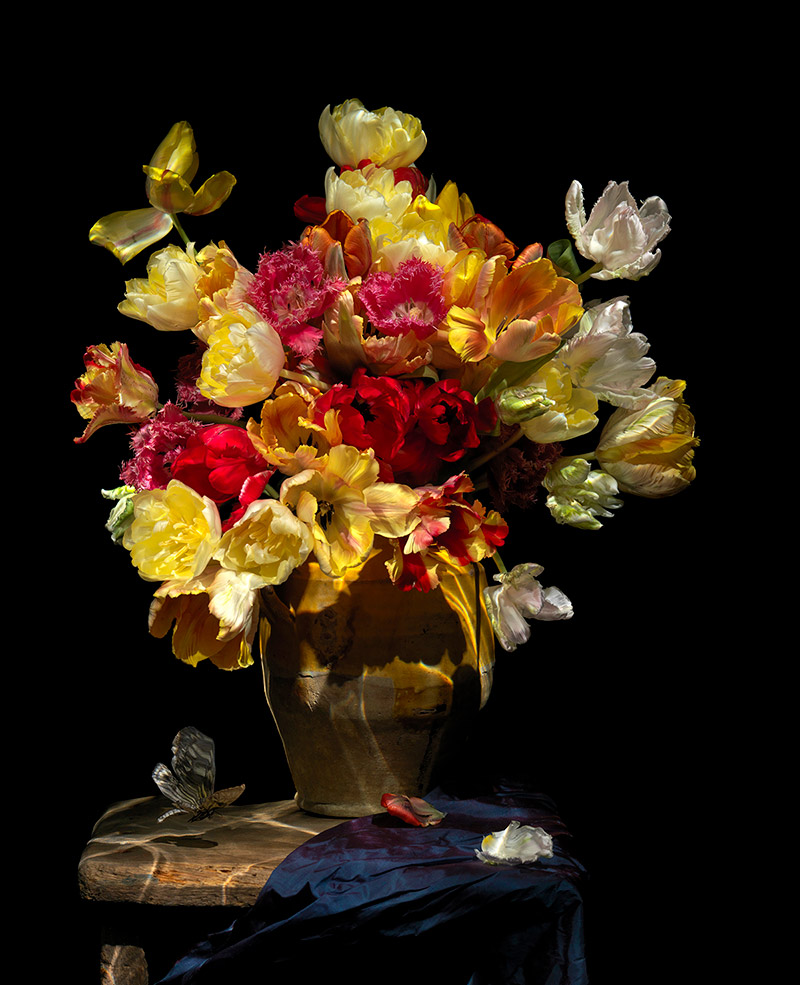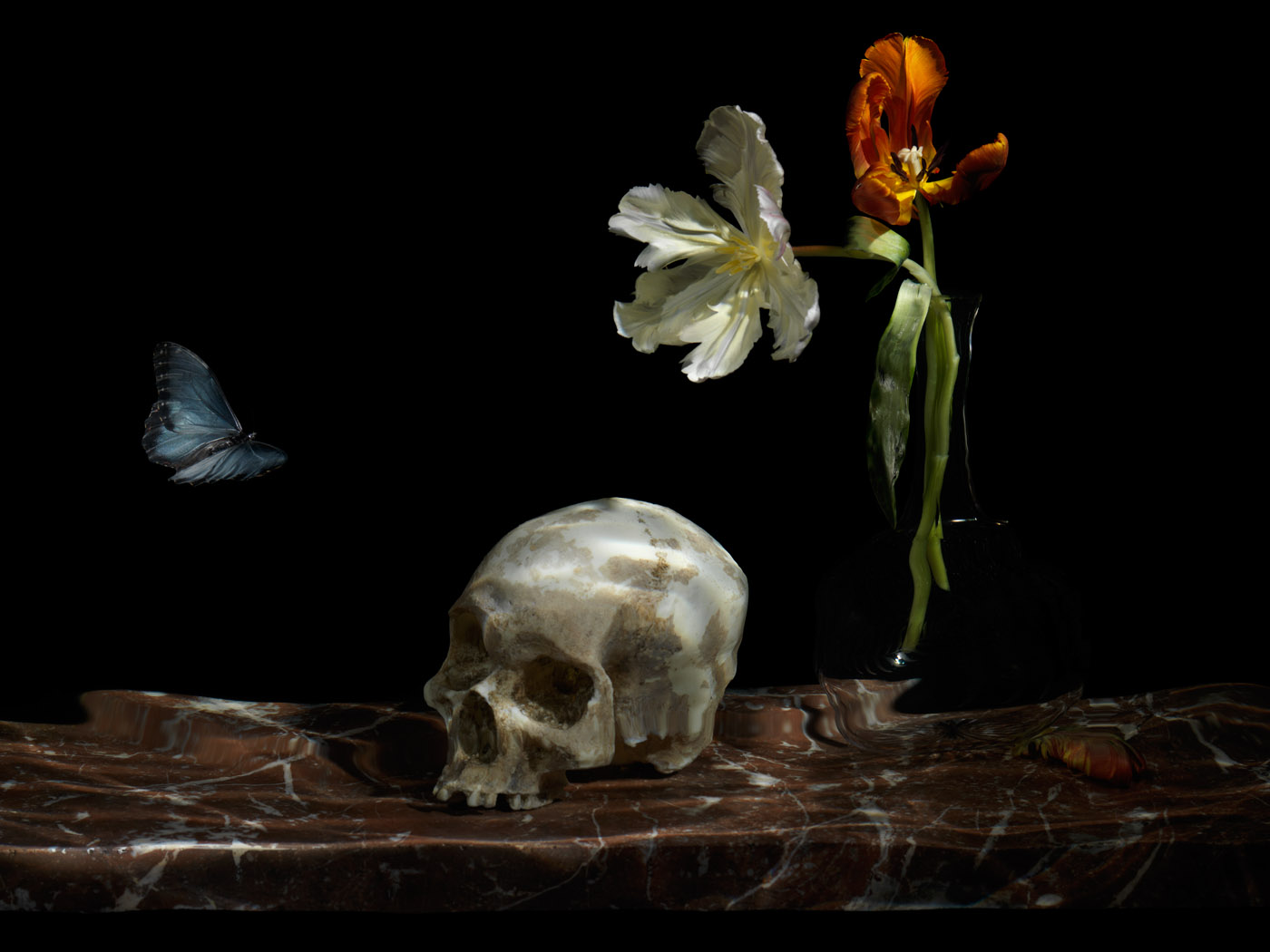Alexander James Hamilton’s work redefines the parameters of still-life photography by merging classical influences with innovative techniques. His Vanitas series, featured in Michael Petry’s Nature Morte (Thames & Hudson, 2016), revisits the visual language of 17th-century Dutch still life while employing a unique underwater process that reshapes traditional approaches to photographic art.

'Grace', 2010 by Alexander James Hamilton.
edition of 10 prints at 120 x 90 cms + II aritst proofs at 200 x 150cms.
In Grace, Hamilton captures a floral arrangement of tulips submerged in water. The vase and stool are immersed in a custom-built tank, where natural light filters through, refracting and diffusing to create a painterly luminosity. This interplay of light and shadow evokes the chiaroscuro techniques of the Dutch masters, yet the underwater setting brings a sense of suspension and impermanence, pushing the imagery into a contemporary context.

'The great leveller' 2009 from the underwater Vanitas series.
The Great Leveller, another notable piece from the series, features a skull, a butterfly, and flowers resting on a marble shelf, all submerged. The fluid dynamics of water, combined with the controlled setup, produce a soft, diffused effect, enhancing the composition’s meditative tone. The work's thematic exploration of mortality and the passage of time aligns with the vanitas tradition while leveraging a distinct technical approach to convey these concepts.
Central to Hamilton’s practice is his commitment to in-camera authenticity. Rejecting digital post-production, he meticulously constructs each scene within the lens's frame, ensuring every element—down to the interplay of light and material—is captured as it occurs. This discipline results in images that not only emulate the painterly qualities of old masterworks but also highlight the precision and control inherent in his process.
Hamilton describes his work as “a celebration of life’s fragility.” By photographing ephemeral compositions underwater, he achieves a convergence of temporality and permanence, where objects appear both suspended in time and subject to decay. The underwater environment further emphasises this duality, with its shifting, unpredictable properties introducing subtle variations that make each image unique.
The Vanitas series offers an intersection of historical homage and contemporary innovation. Hamilton’s work is not just a reflection of technical mastery but also a thoughtful engagement with enduring themes of life, mortality, and the passage of time.

'Isis bound' 2009 from the underwater Vanitas series.
The camera, like the painter’s oils, is a tool in which to eternally preserve the chosen subjects: at times a collection of inanimate objects held in a purgatory state and at others the bodies of characters inscribed with historical and personal narratives, which the final image forever tells. It is both ironic and telling that water, the very element which for the Greek Philosopher Heraclitus stood as a symbol for the unstoppable mill of time, changing everything in its wake, serves precisely as the functional device through which I achieve the painterly effect of these works.

detail from 'Vanitas plate 0592' showing the painterly chiaroscuro effect created using water.
Hamilton's work is in direct dialogue with the painters that have inspired him, participating in the age-old practice of contextualizing antiquities stories. With the camera emerging as a perplexing aporia, a kind of sorcery which successfully presences the past and yet only brings up ghosts.
His tireless work involves the need to generate the complex underwater conditions necessary to create these artworks. His practice is project based with each body of work the result of research into a specific place, or the analysis of a theme: a methodology directly guided by the extensive use of remote studio locations, the photographs from which demonstrate a passion for this dialogue enabled through meticulous preproduction.
in his own words 'I cannot hope to achieve the quality of work that I aspire towards without merging historical and art-historical references seamlessly with my own personal history.'
Explore the full breadth of Alexander James Hamilton’s practice and view additional Vanitas works at DistilEnnui.com.



